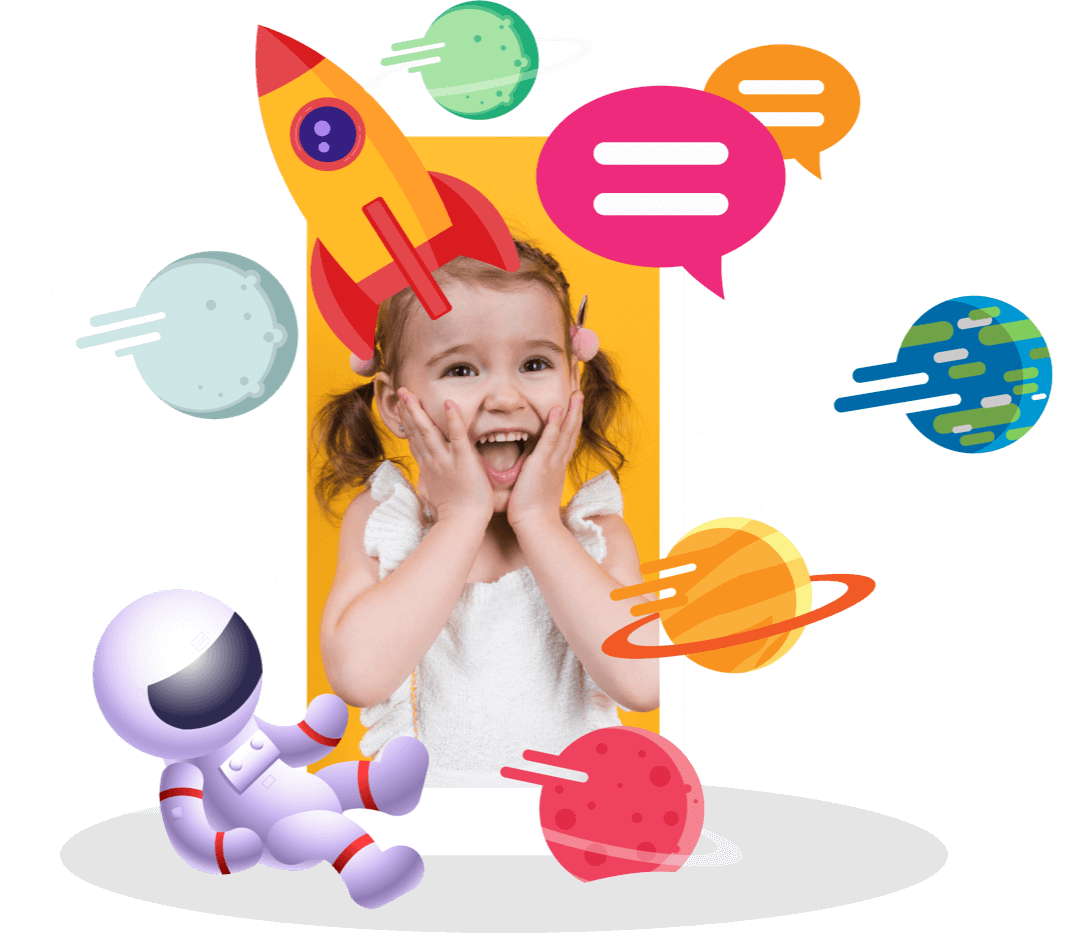There’s no doubt that eLearning is the future of education. It has enabled people to gain access to quality education whenever and wherever they may be. People far from the cities where schools are located as well as individuals who cannot commit to a specific schedule are able to attend classes depending on their availability.
While it has been around for quite some time, eLearning has never been as important as it is now. Countries have been in and out of lockdowns since the start of the COVID-19 pandemic. eLearning made it possible for children of all ages, and even adults, to continue their schooling while remaining safe inside their homes.
With the future uncertain, it is important that parents and caregivers have the knowledge and tools they need to help ensure the accessibility of eLearning and improve the student’s experience. In this article, we’re going to cover several steps you can take that can help make sure that your child has full access to the online educational resources available today.
E-learning accessibility: Why do we need it?
Due to the pandemic, there has been a huge shift towards online learning. Schools, as well as parents, have had very little time to adjust. This quick transition has left a lot of students with disabilities vulnerable. According to the National Center for Education Statistics (NCES) , there are almost 7.3 million students (ages 3 to 21) in the U.S. alone.
Come along with 200k+ families!
Explore the endless possibilities of learning!
Download for Free.
These students face unique barriers. Not all of them are comfortable with the use of technology and communication devices. Some disabilities such as auditory and visual impairments may prevent them from interacting with online content if the platform does not comply with web accessibility standards. When students are unable to access their learning materials or interact with their teachers, it can cause them to feel unmotivated which can have a significant impact on their performance. eLearning accessibility is, therefore, critical to the success of this method.
1. Get to know the eLearning program
It’s important that all parents take the time to become familiar with the eLearning program that their child will use. Find out how your child will be using the program, what resources are available, and what you can do to best support them. Below are some questions you will need to ask in order to determine how accessible the program is for your child:
- Will he/she be comfortable navigating the platform on his/her own?
- Will he/she be able to easily interact with the website, teachers, and classmates?
- Will your child be able to complete the basic tasks such as submitting assignments and taking tests on his own?
Aside from navigation and interaction, your child should also be able to easily access the content of the program. For visually impaired students, the platform should provide alt-text on all images. Videos should include captions for students who have hearing impairments. The language used should be simple, clear, and easy to understand for children with cognitive disabilities and low literacy levels.
Color is another significant factor when it comes to eLearning accessibility. Visually impaired students including those who have color blindness need to be able to distinguish between the text and the background. Without enough color contrast, they may be unable to perceive and interact with the lessons provided on your platform. They also won’t have the same digital experience as other students who do not have the same disabilities which can discourage them from continuing on with their course.
You can check the color contrast of your child’s eLearning materials and the school’s website using a color contrast checking tool such as the SBF Color Contrast Checker. The Web Content Accessibility Guidelines (WCAG) 2.1 standards state that the contrast ratio of text and images of text should be at least 4.5:1. For large-scale text the contrast ratio should be at least 3:1.
Come along with 200k+ families!
Let's communicate better!
Download for Free.
What about the documents provided by the school? PDFs and other documents must be easy to read and understand by all students, including those using assistive technologies, students with low literacy levels, and those with cognitive disabilities. Accessible documents should include a table of contents, headings, alternative text for images, and other document tags.
2. Set them up for success
The transition from the traditional classroom to homeschooling isn’t easy. For children, it blurs the line between “work” and “play.” To help them adjust, you need to make sure that they have a separate space dedicated to learning where they are free from distraction. Ask your child for input on where he will be most comfortable doing his schoolwork as well as what he or she will need in the space to provide him/her easy access to supplies and materials. If your child needs a little monitoring, you can choose to set his/her workspace in the living room or kitchen.
It’s also important that you explain the situation—why they need to stay at home and learn online. More importantly, help them set clear expectations. Adjusting to this “new normal” isn’t going to be easy or quick. You and your child will face challenges. He/she might miss seeing friends and teachers. Help them process whatever feelings may arise due to this abrupt change.

Creating a routine or schedule can also help your child adjust to the changes better. Some children such as little kids or those who have attention issues may require a more flexible schedule. Breaking down their time in “school” into several blocks throughout the day with plenty of breaks in between may help them focus better and stay motivated during class. Make sure to include your child’s input when you help them create a schedule.
It’s also equally important to incorporate their interests into their schoolwork. Minecraft, for example, can help them practice problem-solving skills as well as promote creativity. Cooking can be used to teach math and science concepts. You can check for activities, lessons, tools, and even parent guides on open shcool websites.
If your child requires an individualized education program (IEP), reach out to the teachers to discuss possible learning barriers as well as the strategies and tools you can use to help support your child in various activities. Collaborate with them as well to make sure that lessons are not too easy for your child, but not too hard as well. Think “Goldilocks” level. Ask about modified assignments such as a creative project that exhibits the child’s understanding of a concept instead of a written report. Working with your child’s teachers to help figure out his/her unique learning style and how it can be accommodated can help your child succeed in online learning.
3. Keep accessibility standards in mind
While it’s the responsibility of the schools to make sure that their website and materials are accessible to all students, it’s still in your child’s best interest to learn all about the current web accessibility guidelines and standards. Part of the reason for this is that it helps you know what you have the right to expect when it comes to your child’s eLearning program. In addition, it can help the school stay accountable to their students and prevent some students from feeling marginalized. Helping them make sure that they pass an ADA compliance website audit is just an added benefit.
Come along with 200k+ families!
Explore the endless possibilities of learning!
Download for Free.
In case you are unaware, ADA compliance involves ensuring that websites and digital products do not discriminate against people with disabilities. Section 508 of the Rehabilitation Act requires that all U.S. government agencies (including public schools) must make sure that their Information and Communications Technology (ICT) is accessible to all, including people with disabilities. This means that all computers, phones, software, documents, training programs, etc. can be used by employees with disabilities as well as anyone in the public (with or without disabilities). Complying with these standards not only ensures the success of any eLearning program, it also prevents lawsuits against your child’s school.
4. Pay attention to evolving technology
Technology is constantly advancing. More and more types of digital technology are becoming available for use by the public. Schools and other institutions have done the best they can with what they had to help students continue their education despite the challenges incurred from the COVID-19 pandemic. However, it is important that parents also take the time to keep up with technological advancements. These can help parents and their children overcome the current challenges they face with online learning. They may find better tools that will provide their child with the academic support they need to achieve success.
Touch screens, for example, is a suitable, accessible alternative for children who aren’t physically able to use a mouse or a keyboard. Sip-and-Puff systems can also be used by students with fine motor skill disabilities for controlling a computer or mobile device. Students with dyslexia can use Ginger or Ghotit to help them with writing. Dictate, an AI-enabled add-in for Office 365 applications, converts speech into text.

Adapting to the times
More and more of our lives take place in the digital world. We can no longer cling to what was once the norm. Advancements in technology have made it possible for education to be accessible to many, whenever and wherever they may be but “many” is not all.
It is our duty as parents and caregivers to make sure that our children don’t get left behind, especially when it’s something as important as education. Making sure that your child can use his current eLearning program to the best of his ability and has access to educational tools and materials that can enable him to achieve his goals should help prevent that from happening.





